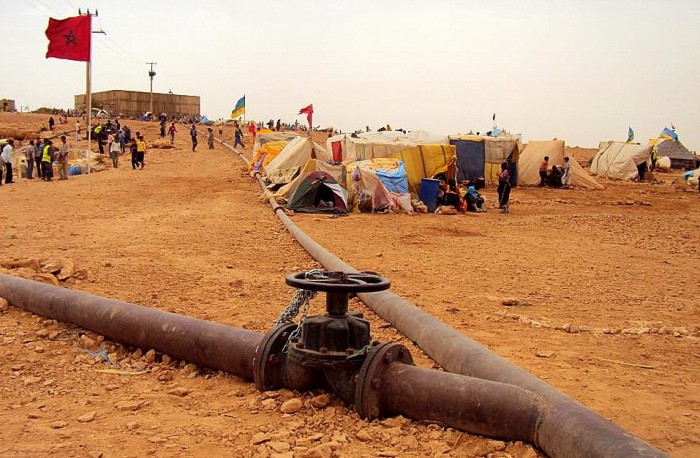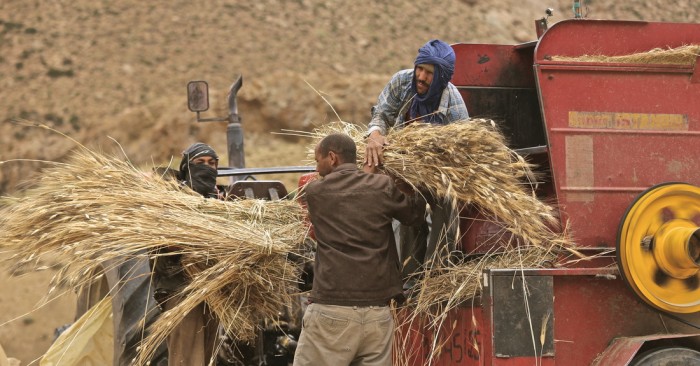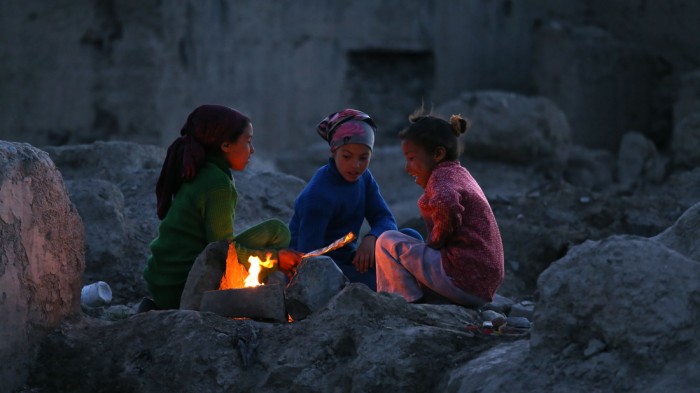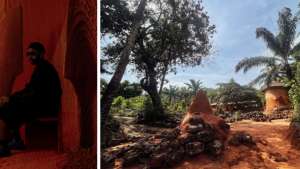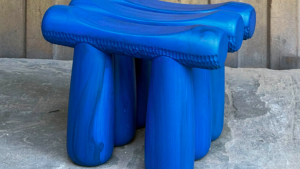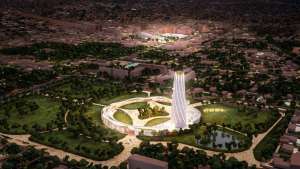Sitting on the balcony of a local cafe, filmmaker, photographer and activist Nadir Bouhmouch overlooks the souks lining the maze-like alleys of the medina in Marrakech.
Loose curls and dark shades, he tells me that he recently moved to the historic city from the more trendy city of Casablanca to be closer to his latest project.
It is a documentary on the 6-year protest action in a remote Moroccan village in the Sahara Desert.
A five hour drive from Marrakech, the residents of Imider - who are mostly ethnic Amazighs – are staging what many consider to be the country’s longest protest.
“They have on their land.... this mining corporation,” begins the 27-year-old. “The biggest silver mine in Africa is right next to them.
“It’s been extracting a lot of water from their aquifers. So they’re digging 125 metre deep wells and the people who actually depended on farming are digging 25-30 metre deep wells. The top layers of the aquifers seep into the wells and pollute the water.”
Operated by La Societe Metallurgique d'Imider (SMI) and owned by Societe Nationale d'Investissement (SNI), a private holding company owned by the Moroccan royal family, the Imider Mine is threatening the livelihood of Morocco’s indigenous people, many of whom rely on the water for agriculture.
The villagers set up a resistance camp on Mount Alebban in 2011, where the mine’s chief water pipeline was established. By shutting off the pipeline, the protesters have so far withheld more than three million tonnes of water from SMI, according to Environmental Justice Atlas.
But the Imider Mine set up another pipeline by cutting through a second village, sending the protest into a deadlock.
“In the first two years they [the protesters] managed to have some leverage over them because they had the water shut but when they [the mine] built this new pipeline, they [the protesters] didn’t have as much leverage anymore,” explains Bouhmouch.
“They still do have some leverage because they [the mine] need that pipeline to work again because it costs less – it’s much closer.”
For Bouhmouch telling their story is imperative. It’s the international coverage of the protest that has curbed a lot of the violence that the protesters were met with before. But more than that, the documentary hopes to shed light on a unique culture, one that is steeped in tradition, history and expression.
“The first victims of climate change, of the environmental injustice are poor people,” he says. “The places that are the most polluted are the places where poor people live. You don’t see factories spewing toxic waste in bourgeois neighbourhoods. You see them in impoverished neighbourhoods. When you’re defending the environment, you’re actually defending people.”
This is his fourth film in a string of films dealing with social activism and identity among the people of Morocco.
In his first, My Makhzen & Me, he just picked up a camera, he explains, choosing to forgo the labyrinthian process in place to get a film permit from the State.
“I was almost working as an amateur so I didn’t really care for getting into film festival or trying to get money for it or trying to find a producer or anything like that. I just picked up the camera.
“I was a protester before I was a filmmaker. So I was inside the protest. And my role as a filmmaker was secondary to that and the film itself was an act of protest because it was done illegally.”
In Morocco, to be a filmmaker or a journalist you have to have a permit approved by the government but to be considered for a permit you must have already made a number of films. It’s unlikely, says Bouhmouch, that anything with a political message will be approved for filming or screening.
So when he set out to film Morocco’s protests in 2011, which took shape with the Arab Spring in North Africa (Although, Bouhmouch believes that the classification of these protests is exclusionary in light of the fact that other ethnicities also took part in the revolution), he knew he’d be doing so illegally.
“So this film was basically, I picked up a camera, I edited it myself, I did everything by myself. I partnered up with one of the activist news websites that was covering the protest and they helped me do the publicity for it and then we released it for a three hour period on the anniversary of the movement,” he explains.
For his second project, 475, he documented the story of Amina Filali, a 16-year old Moroccan girl who committed suicide after being forced to marry her alleged rapist.
The Moroccan government repealed Article 475 of the penal code after Filali’s case made international headlines in 2012. The girl was married to her 23-year-old rapist for 7 months before committing suicide.
Her parents and a judge had forced the marriage to protect the family honour.
His third film, a short, is an ode to timnadin, one of the earliest forms of expression in Amazigh culture. It’s a form of poetry that’s specific to gender in that there’s a special kind of timnadin for each task a woman performs.
“It’s very interesting the way it works with gender because with the men they just recite it, or they can sing it. But with the woman, each type of timnadin is associated with a certain domestic task. So carpet weaving has its own timnadin. When they go to harvest wheat it has its own timnadin. So each type of work associated with women has its own timnadin,” he explains.
Bouhmouch's fascination with documenting Morocco's rich culture extends beyond filmmaking. His photographs of farmers and Moroccan landscapes give a welcome respite to the tourism-influenced images of the country on the internet. A passionate journalist, he's also reported on the rise and fall of cinema in Morocco, which at its peak had more than 240 theatres.
Through his films, writing and photojournalism he is ensuring that young Moroccans are able to tell their own stories.

